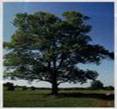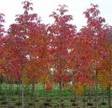| Kingdom | Plantae |
| unranked | Angiosperms |
| unranked | Eudicots |
| Order | Lamiales |
| Family | Oleaceae |
| Genus | Fraxinus |
| Species | F. americana |
| Binomial name | Fraxinus americana |
Other Common Names:
The other common names for the ash tree are American Ash, Biltmore Ash, Cane Ash, Common Ash, European Ash, Weeping Ash and White Ash.
History
The White Ash tree, Fraxinus Americana, is a handsome native tree. It develops an open and rather round topped crown in its old age. This is the largest of the ash trees in North America. Mature trunks can reach almost 6 feet in diameter.


Description
White ash has a strong framework with stout main branches growing upright and smaller branches spreading outward. The bark of mature trees is dark brown and deeply fissured by interlacing ridges forming a characteristic diamond pattern. Ashes have opposite branching and their pinnately compound leaves are arranged along the branchlets in opposing pairs, with an odd leaflet at the end. The leaves of white ash are 8-14 in long and have 5, 7 or 9 (usually 7) leaflets, each 3-5 in long and pointed at the tip.


Range
The White Ash (Fraxinus americana) is one of the largest of the ash genus, Fraxinus. Native to eastern North American hardwood forests, it is a tree of mesophytic forests from Quebec to northern Florida. They are also confined to the finest soils of the Tennessee and Ohio River Valleys.
Habitat
This one occurs in well-drained soils along rivers and on lower slopes in mixed forests. White ash never occurs in pure stands and is rarely a dominant tree in the forest; it grows in small groups or singly with other forest trees such as red maple. White ash is quite tolerant of salt (but not highly exposed beach front conditions), and is well suited to the coastal garden.
Cultivation
Alkaline and moist soils, along the edges of woods and well-aerated grasslands where common ash can take up a lot of space to grow. White ash is easy to grow and adaptable, although it reaches its full height (well above 100 feet) only in moist, deep, well-drained soils in full sun. It dislikes dry or rocky soils.
Sow ash seed outdoors as soon as it is collected in the fall. Germination will occur in spring. Seeds that have been stored require 2-3 months of cold stratification. Cultivars are grafted onto seedling rootstock.
Flowering Season
The green to purple colour plain flowers of the ash tree are in bloom in early spring.
Pests and Diseases
The emerald ash borer Agrilus planipennis, a wood-boring beetle introduced from eastern Asia accidentally with ash wood products in about 1998, threatens some 7 billion ash trees in the United States. It is susceptible to many diseases when grown in poor conditions but relatively pest free when properly placed. There are no resistant varieties. Among the common ash trees, White Ash is the most likely to encounter a problem during its lifetime, although most trees live a long and healthy life. Borers and scales are occasional pests, leaf anthracnose is a frequent cosmetic disease of the leaves when wet springs occur, and trunk canker is an occasional disease of the bark and cambium.
Parts Used

The leaves, mature seeds and the inner bark are the most commonly used parts of the tree for its commercial and medicinal value.
Medicinal Applications
• The bark of the ash tree is used as a tonic and an astringent.
• The leaves are also astringent, and they have a laxative and diuretic effect.
• They have been used as a mild substitute for senna.
• Even the seeds were used: as an aphrodisiac, a diuretic, an appetite stimulant, and a remedy for fevers.
• A tea made from the bark as a treatment for an itching scalp and sores, and a leaf tea as a vermifuge, or agent that expels worms from the body.
• It was also used to stop minor bleeding; as an emetic, to promote vomiting; and for a variety of other purposes.
• The sap of the tree is used to treat external cancerous growths.
Commercial Applications

• It makes a good shade tree and an excellent city tree.
• The wood is hard, tough and very strong but elastic, extensively used for tool handles, quality wooden baseball bats, hurleys and other uses demanding high strength and resilience.
• It also makes excellent firewood.
• The wood is also extensively used for non-impact tool handles, furniture, hockey sticks, polo mallets, church pews and other products too varied and numerous to mention.

In Norse mythology, the World Tree Yggdrasil was an ash tree, and the first man, Ask, was formed from an ash tree (the first woman was made from alder). Elsewhere in Europe, snakes were said to be repelled by ash leaves or a circle drawn by an ash branch. Irish folklore claims that shadows from an ash tree damage crops. In Cheshire, it is said that ash could be used to cure warts or rickets. The ash exudes a sugary substance that, it has been suggested, was fermented to create the Norse "Mead of Inspiration.
Almond Blossom Fair a weeklong celebration in Agrigento was started in the thirties as a spring country festival in this valley where there are literally thousands of almond trees. In Phrygian myths the almond tree was considered the father of the world, perhaps because it was the first tree to flower in springtime and in Greek myths the almond was the nut of immortality.
Nowadays this festival, heralding the arrival of the first fruits of spring, is combined with an International Folklore Festival featuring exotic instruments, uninterrupted singing, parades, beauty pageants, traditional puppet shows and open-air performances galore. All kinds of Sicilian sweets made with almonds and almond paste are served along with almond ice cream underneath the flowered balconies. People show up from everywhere, wearing colourful costumes and performing in the streets of the city. There's also a Sicilian cart parade and fireworks at the finale.
The ash tree was, says Grigson, sacred in Europe and Britain, and many powers were ascribed to it, including the curing of warts and the ruptures of children. To accomplish this, a young ash was split open and the naked, ruptured baby passed through the opening. The ash was then bound up, and as the ash healed, so, supposedly, did the rupture of the child. In the middle Atlantic states the leaves of some ash species are valued as a cure for snakebites, but one wonders if this is not the remnant of an Elizabethan tale, for we find Gerard quoting from an earlier source, "The leaves of this tree are of so great a virtue against serpents, as that the serpents dare not be so bold as to touch the morning and evening shadows of the tree.